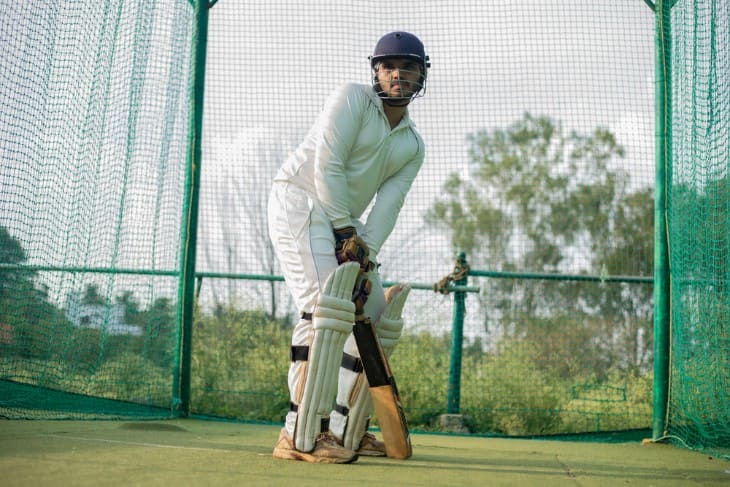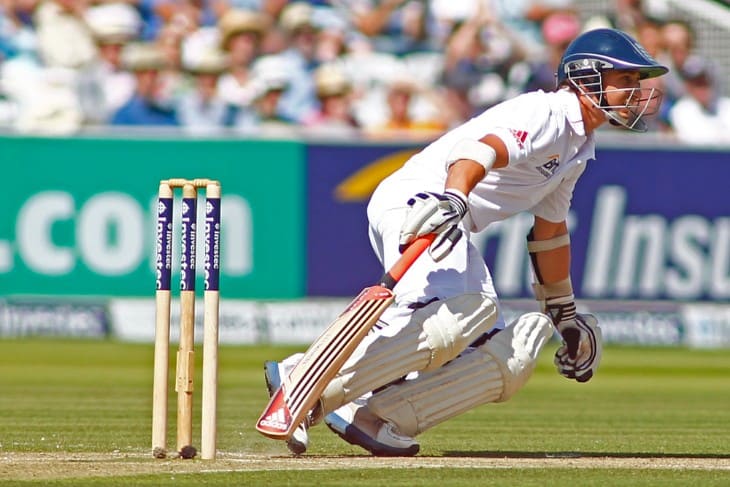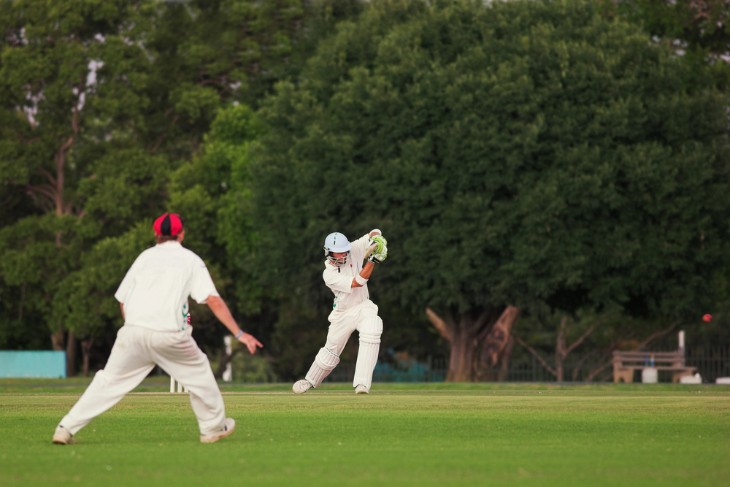- Key Components of Run Rate Calculation
- Simple Calculation Method for Run Rate
- Advanced Techniques in Run Rate Analysis
- The Impact of Overs in Determining Run Rate
- Run Rate Comparison: Different Formats of the Game
- Notable Run Rate Achievements in Cricket History
- Run Rate and Game Strategy: How Captains Utilise Data
- Conclusion
The concept of run rate is fundamental in the sport of cricket, serving as a primary metric to gauge a team's performance in a match. Essentially, the run rate is a measure of the average number of runs scored per over by a batting team. In cricket, an over consists of six legal deliveries bowled by a bowler. The basic formula to calculate the run rate is straightforward: it's the total number of runs scored divided by the number of overs bowled. This calculation provides a numerical value, representing the average runs scored per over. For instance, if a team scores 250 runs in 50 overs, the run rate is 250 divided by 50, equating to a run rate of 5 runs per over. This simple yet effective measure offers a quick insight into the batting team's pace of scoring, crucial for strategy formulation.
The importance of understanding run rate lies not only in its basic calculation but also in its application during different stages of a cricket match. Run rate plays a critical role in limited-overs formats like One Day Internationals (ODIs) and Twenty20 Internationals (T20Is), where teams have a fixed number of overs to play. In these formats, maintaining a healthy run rate can be the key to setting a challenging target for the opposition or chasing a set total. Conversely, in Test cricket, where time and overs are not as constrained, the run rate might be of less immediate tactical importance but still provides valuable insights into the game's pace and a team's dominance.
Key Components of Run Rate Calculation
When calculating the run rate in cricket, it is essential to consider all components that contribute to this statistic. The primary factor is the total number of runs scored by the batting team. This includes all runs scored off the bat, as well as extras like wides, no-balls, byes, and leg-byes. The second critical component is the number of overs bowled. In a completed match, this would typically be the total number of overs allocated to the innings. However, in cases where an innings is cut short, either due to weather conditions or the team being bowled out, the number of overs actually bowled is considered. It's important to note that in cricket, an over is counted only when six legal deliveries have been bowled, barring any wides or no-balls, which are not counted as legal deliveries.
Understanding these components is crucial for accurately interpreting the run rate in cricket. It helps in assessing a team’s performance, especially in comparison with the opposing team’s run rate. For instance, in a run-chase scenario in a limited-overs match, comparing the current run rate with the required run rate (the rate at which the team needs to score to win) can provide a clear picture of the chasing team's position and the likelihood of their victory. It also aids in strategic decision-making, such as deciding when to accelerate scoring or when to focus on preserving wickets.
Simple Calculation Method for Run Rate
The basic calculation method for the run rate in cricket is quite straightforward, but it's essential to understand its nuances for accurate application. The formula for calculating the run rate is:
- Total Runs Scored divided by Total Overs Bowled
For a clearer understanding, consider the following steps:
- Calculate the total number of runs scored by the batting team. This includes runs scored from the bat, and extras like wides and no-balls.
- Determine the total number of overs bowled during the innings. Remember, an over consists of six legal deliveries.
- Divide the total runs by the number of overs to find the run rate.
For example, if a team scores 300 runs in 50 overs, the run rate would be calculated as follows:
- 300 runs ÷ 50 overs = 6 runs per over
This simple method provides a quick and easy way to understand the scoring pace of the batting team, making it a fundamental aspect of cricket analysis.
You can use Youtube in order to learn the calculations easily, but do notice most of the channels that cover the calcultaions are from India and some of them are a bit difficult to understand (accent-wise):
https://www.youtube.com/results?search_query=how+to+calculate+run+rate+in+UK+cricket%3F
Advanced Techniques in Run Rate Analysis
In modern cricket, the analysis of the run rate in cricket extends beyond simple calculations. Advanced techniques consider various factors that can affect run rate, offering a more nuanced understanding of a team's performance. These techniques include:
- Contextual Factors: The run rate can be influenced by several external factors like pitch conditions, weather, and quality of opposition. For instance, a high run rate achieved against a strong bowling lineup on a difficult pitch is more significant than the same rate achieved under easier conditions.
- Phase Analysis: Breaking down the run rate according to different phases of the game (e.g., powerplay, middle overs, death overs in limited-overs cricket) can offer insights into a team's strategy and performance in specific game segments.
- Player-Specific Analysis: Assessing individual players' contributions to the overall run rate. This involves looking at strike rates of batsmen and identifying key partnerships that significantly impact the team's run rate.
- Comparative Analysis: Comparing a team's run rate with historical data or the average run rate in similar matches. This comparison can highlight a team's performance relative to standard benchmarks or trends in the sport.
These advanced techniques enhance the understanding of the run rate in cricket, allowing analysts, coaches, and players to extract deeper insights for strategic planning and performance improvement.

The Impact of Overs in Determining Run Rate
The concept of overs plays a pivotal role in determining the run rate in cricket. An over, consisting of six legal deliveries, is the basic unit for measuring the progress of an innings. The number of overs in a match varies depending on the format. In Test cricket, there are no fixed overs, and the run rate often reflects the tactical approach of the batting side. In contrast, limited-overs formats like ODIs and T20s have a fixed number of overs (50 and 20 respectively), which significantly influences the run rate.
In limited-overs cricket, the restriction on overs leads to different strategic approaches:
- In the early overs, teams might adopt a cautious approach, focusing on preserving wickets and building a foundation for a higher run rate in later overs.
- Towards the end of the innings, particularly in the last ten overs of an ODI or the death overs of a T20 match, teams often accelerate scoring, resulting in a higher run rate.
The impact of overs on the run rate in cricket is evident in how teams plan their innings. In ODIs, a run rate of around 5-6 runs per over is generally considered par, but this can vary based on conditions and match context. In T20s, where the emphasis is on quick scoring, run rates can exceed 8-9 runs per over. Understanding this dynamic is crucial for teams to strategise effectively in different formats of the game.
Run Rate Comparison: Different Formats of the Game
Comparing the run rate in cricket across different formats reveals how the game's nature influences scoring rates. Each format, from Test cricket to One-Day Internationals (ODIs) and Twenty20 Internationals (T20Is), presents unique challenges and opportunities that affect the run rate. In Test cricket, the absence of an over limit allows teams to adopt a more strategic and often conservative approach to batting. The run rate in this format is generally lower, with teams focusing on endurance and wicket preservation over quick scoring. A run rate of three to four runs per over is typically considered good in Tests.
In contrast, ODIs and T20Is, being limited-overs formats, naturally encourage a higher run rate in cricket. In ODIs, teams have 50 overs to score, leading to a balanced approach between aggression and preservation. A run rate of around five to six runs per over is often the benchmark in modern ODIs. T20 cricket, with its 20-over format, pushes the run rate even higher. Teams aim for a brisk scoring pace from the outset, often achieving run rates of seven or more runs per over. This comparison underscores how the format dictates the strategic approach to batting and, consequently, the run rate.
Notable Run Rate Achievements in Cricket History
Examining notable instances of the run rate in cricket offers insights into extraordinary performances and strategic masterstrokes. Some remarkable case studies include:
- Australia’s Record ODI Run Rate: In 2006, Australia set a record for the highest run rate in an ODI innings (minimum 20 overs), scoring at 9.6 runs per over against South Africa.
- Chris Gayle's T20 Dominance: In the 2013 Indian Premier League, Chris Gayle recorded a staggering run rate, scoring 175 runs off 66 balls for the Royal Challengers Bangalore, showcasing an explosive batting style.
- England’s Aggressive Approach in 2019 World Cup: England, during the 2019 ICC Cricket World Cup, consistently maintained a high run rate, which was instrumental in their victory. Their approach redefined the benchmark for ODI batting.
- West Indies in Early T20 Internationals: The West Indies team, particularly in the early years of T20 Internationals, set high run rate standards, demonstrating the impact of aggressive batting in the shortest format of the game.
These case studies highlight exceptional moments where the run rate in cricket was pushed to new heights, illustrating the evolution of batting strategies and the increasing emphasis on scoring rates in the modern era of cricket.

Run Rate and Game Strategy: How Captains Utilise Data
The run rate in cricket plays a crucial role in the strategic decision-making of captains and coaches. Understanding and manipulating run rate can be the difference between winning and losing, especially in limited-overs cricket. Captains use run rate data to make informed decisions on field placements, bowling changes, and batting orders. In a chase scenario, for example, captains must balance the need to maintain a healthy run rate with the risk of losing wickets. This often involves tactical decisions like promoting hard-hitting batsmen up the order or rotating strike bowlers to stem the flow of runs.
In the fielding side, captains use run rate data to apply pressure on the batting team. This might involve setting attacking field placements to take wickets and slow down the run rate, or deploying defensive fields to contain scoring. Similarly, bowlers adjust their tactics based on the required run rate, varying their pace, line, and length to control the game's tempo. The run rate in cricket thus becomes a central element around which the game's strategy revolves, with captains and players constantly adapting their approach based on the evolving match situation.
Conclusion
In conclusion, the run rate in cricket holds significant importance in understanding the game's dynamics. It is more than just a statistical measure; it's a reflection of a team's strategic approach, the game's evolving nature, and the influence of various external factors. From the basic calculation method to the advanced analytical techniques, run rate remains a vital indicator of a team's performance and potential to succeed in different formats of the game.


